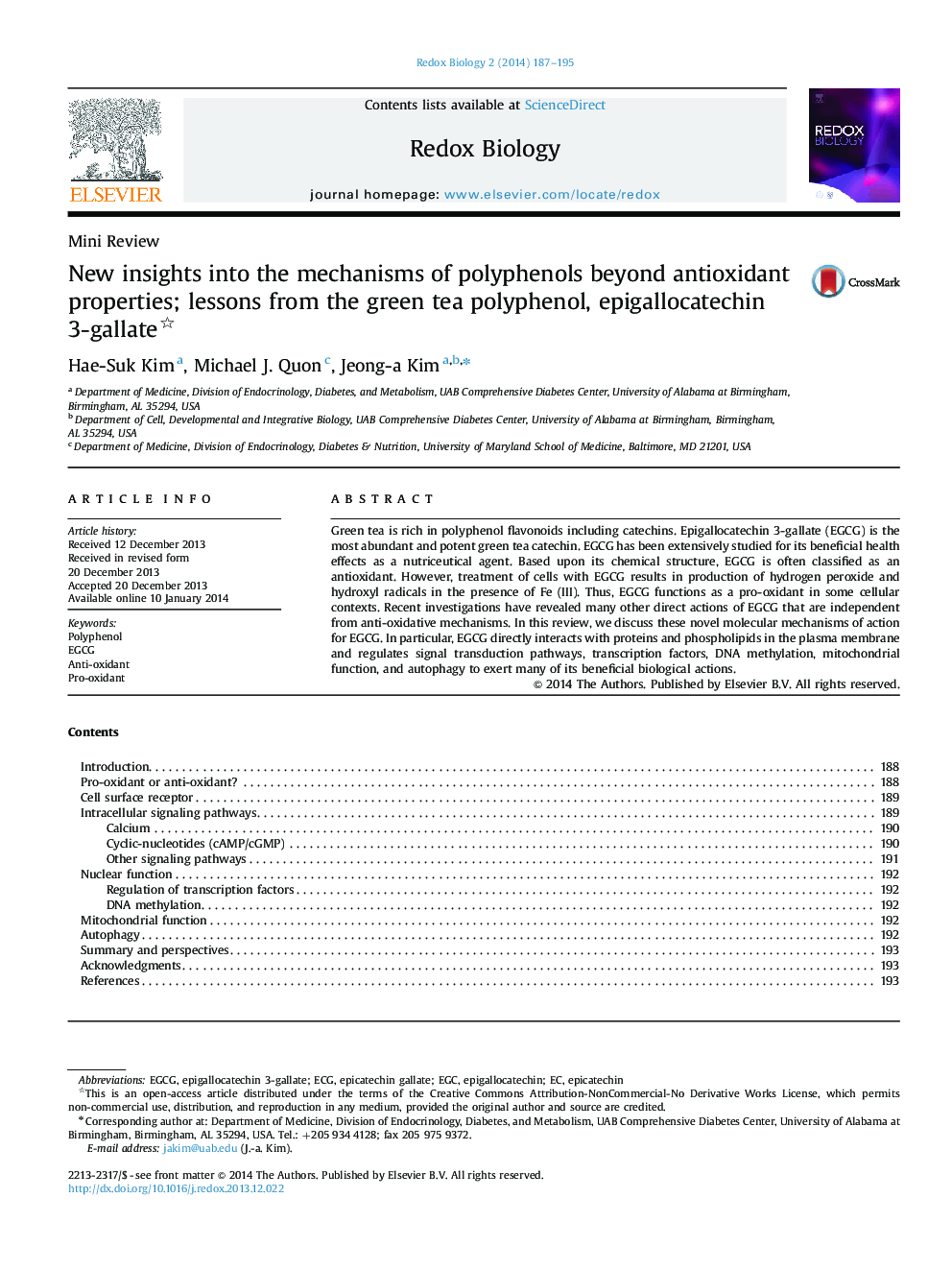| کد مقاله | کد نشریه | سال انتشار | مقاله انگلیسی | نسخه تمام متن |
|---|---|---|---|---|
| 1922993 | 1535848 | 2014 | 9 صفحه PDF | دانلود رایگان |

• Many biological actions of EGCG are mediated by specific mechanisms other than its well-known anti-oxidant properties.
• EGCG is a pro-oxidant per se in some biological contexts.
• EGCG directly interacts with cell surface membrane proteins and specific known receptors.
• Treatment of cells with EGCG regulates specific intracellular signaling pathways and transcription.
• Specific biological actions of EGCG are regulated in a concentration-dependent manner.
Green tea is rich in polyphenol flavonoids including catechins. Epigallocatechin 3-gallate (EGCG) is the most abundant and potent green tea catechin. EGCG has been extensively studied for its beneficial health effects as a nutriceutical agent. Based upon its chemical structure, EGCG is often classified as an antioxidant. However, treatment of cells with EGCG results in production of hydrogen peroxide and hydroxyl radicals in the presence of Fe (III). Thus, EGCG functions as a pro-oxidant in some cellular contexts. Recent investigations have revealed many other direct actions of EGCG that are independent from anti-oxidative mechanisms. In this review, we discuss these novel molecular mechanisms of action for EGCG. In particular, EGCG directly interacts with proteins and phospholipids in the plasma membrane and regulates signal transduction pathways, transcription factors, DNA methylation, mitochondrial function, and autophagy to exert many of its beneficial biological actions.
Molecular mechanisms for beneficial health effects of EGCG. Low concentrations of EGCG have beneficial effects on cardiovascular and metabolic functions in normal physiology and pathophysiology. Low concentrations of EGCG directly and indirectly stimulate cellular events including intracellular signaling, nuclear and mitochondrial functions, and lysosomal autophagy. By contrast, high concentrations of EGCG may cause severe stress that damages cellular integrity and disrupts nuclear and mitochondrial function and lysosomal autophagy. These actions can be applied to cancer therapy by inducing cell death. Green oval () indicates EGCG that directly binds or is transported into the indicated organelles.Figure optionsDownload as PowerPoint slideFigure optionsDownload as PowerPoint slide
Journal: Redox Biology - Volume 2, 2014, Pages 187–195